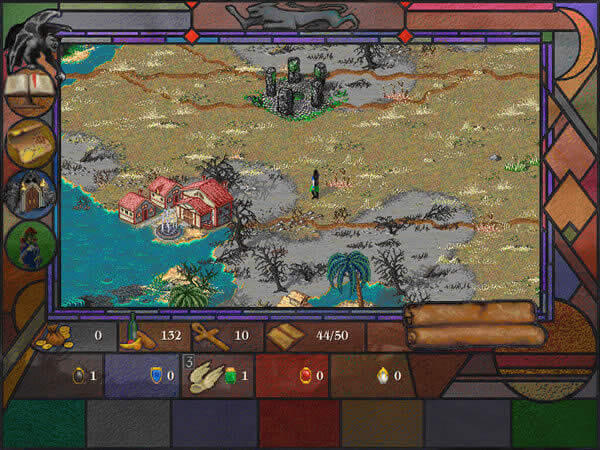MTG Forge was written because I enjoyed Shandalar so much. Shandalar being the 1998 MicroProse version of Magic: The Gathering called “Duels of the Planeswalkers” which also had an expansion called “Spells of the Ancients.” It is amazing that even 10 years ago the word “planeswalker” was around but it was not made into a card until recently. Anyways, Shandalar was great fun and featured constructed (all the cards), sealed, and a basic RPG.
The Shandalar Deck Injector is a small Java program I put together to facilitate the easy creation and use of your own decks in MicroProse's Magic the Gathering: Shandalar. It also allows you to edit a couple of in game stats, namely food and gold. If you like this tool be sure to check out CirothUngol's Shandalar SVE Tool at the SlightyMagic. Shandalar was an eccentric and reportedly powerful mage who lived in a converted Halruaan skyship, east of Ulgoth's Beard on the Sword Coast in the 1360s DR.2 Shandalar was a skilled mechanic and he created several devices to harness the lightning from the coastal storms to power his various contraptions. It was also rumored that the old wizard was immune to all.
After playing many days of constructed, I was beginning to get bored so I hesitantly tried the sealed deck option. As it turned out, it was even better than constructed. Although Shandalar’s sealed card pool was pretty abysmal, I always seemed to have more red cards, it was still new and exciting. MTG Forge stemmed from the simple idea that I wanted to add and remove cards from the sealed card pool.I knew that trying to program Magic was a big task and that I probably wouldn’t ever be able to program a whole block, so MTG Forge was designed primarily for sealed games. Since sealed games usually have lots of creatures, I figured that programming the AI to use creatures would be easier than spells, since many spells depend on the board situation like Wrath of God.
In many ways Shandalar is still the gold standard. The game board and card presentation is clear and easy to understand. Selecting your phase stops is very simple. And the AI does occasionally surprise me. Shandalar’s AI seems to be able to do simple combos although it randomly shoots itself in the foot by playing Weakness (enchant creature -2/-1) on its own creature. Overall Shandalar’s AI is probably better than MTG Forge’s, but Forge does better at creature combat. I don’t necessarily take this as a putdown since Shandalar had more manpower.
There have been a few unofficial updates to Shandalar but they tend to be pretty random. I found a few patches at http://www.manalink.de but nothing is really organized. You can download Shandalar from here, but you will have to use BitTorrent. Enjoy.Yes you can update your old 1997 PC game Shandalar. The update patch is called ManaLink 2.0 and there are close to 2000 new cards. You have to download a few files so I’ll point you to the installation guide. The forums that wrote the update can be found here.
This update includes Vanguard, Momir Basic, and type 4.
Vanguard is a like a normal duel, except both you and your opponent have one special card that gives extra abilties.
Momir Basic is a type of vanguard where your library has only land and you have a special card that reads: “X, Discard a card: Put a token of a random creature with converted mana cost X into play. Use this ability once per turn when you could play a sorcery.”
Type 4 infinite mana, also known as SPAT has special rules.
--Each player has unlimited mana available.
--Each player can only play 1 spell a turn.
--Before the game begins the deck is distributed between the 2 players.



Shandalar Modern Download
--It is recommended that you use a singleton deck.